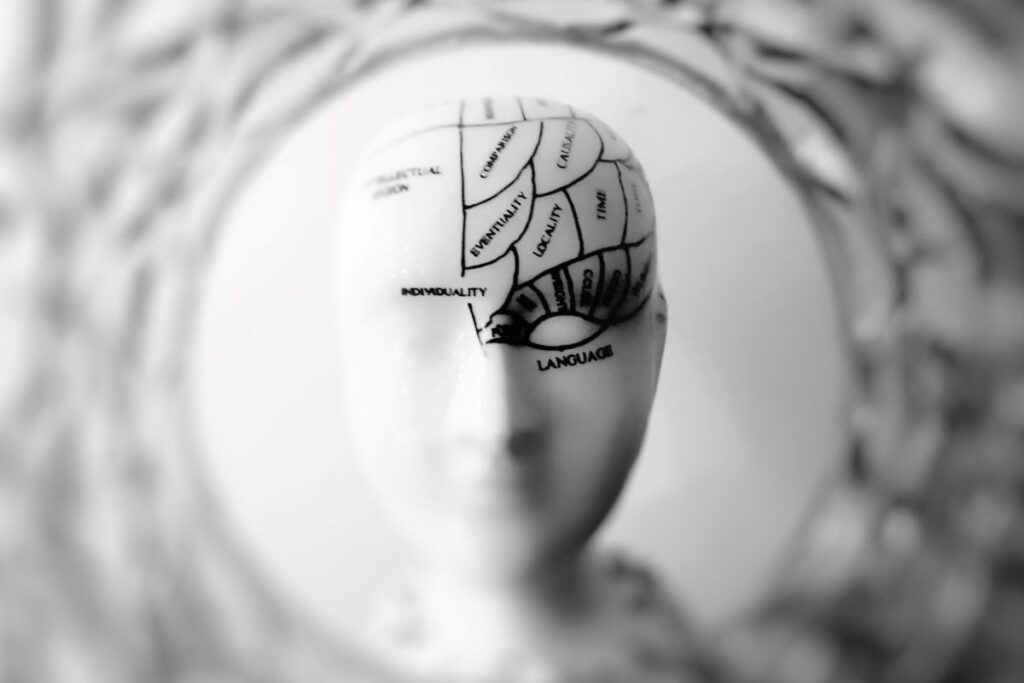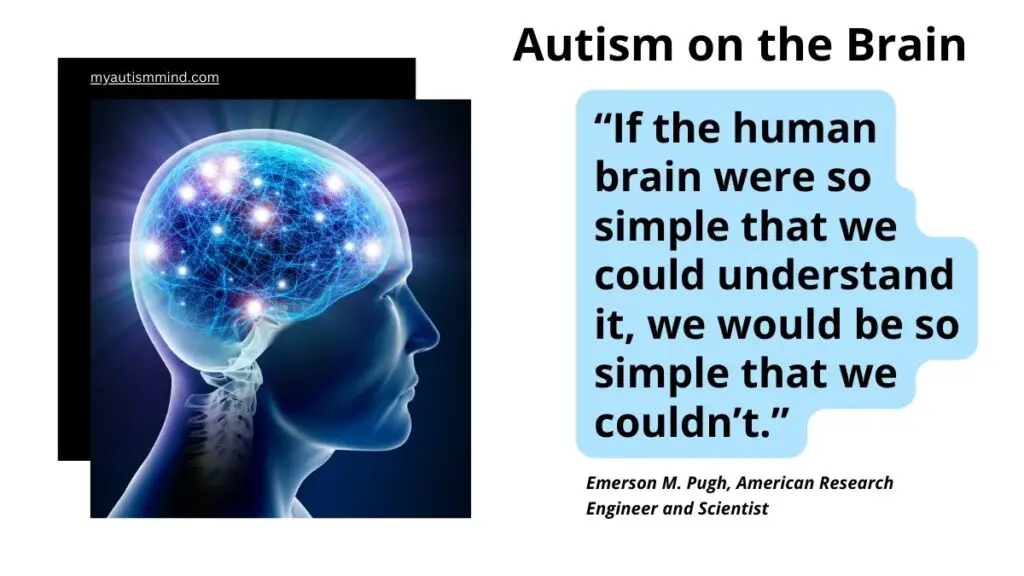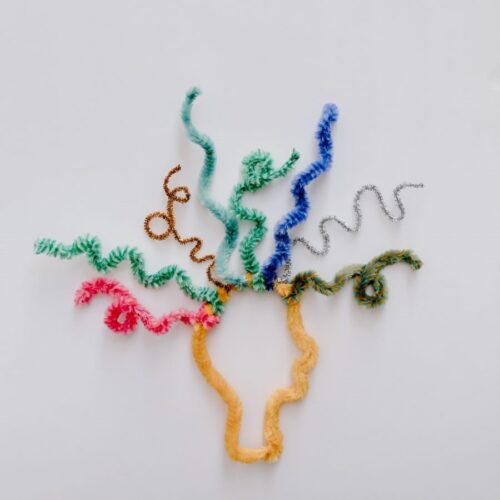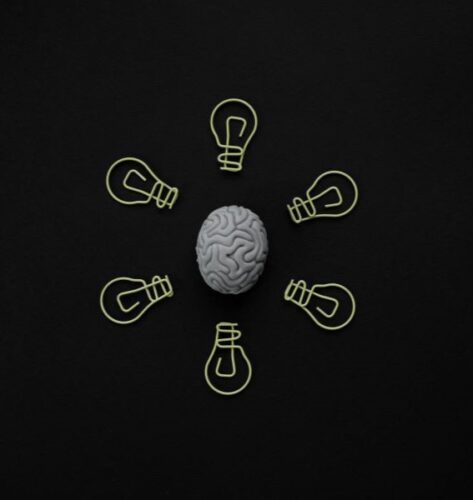Autism on the Brain: Unpacking the Meaning Behind Neurodiversity
 Do you have autism on the brain? This seemingly weird question is one that is being actively explored by scientists and experts. It is known that autistics and neurotypical individuals are different, but the questions of why and how the autistic brain is unique are ones that continue to be explored.
Do you have autism on the brain? This seemingly weird question is one that is being actively explored by scientists and experts. It is known that autistics and neurotypical individuals are different, but the questions of why and how the autistic brain is unique are ones that continue to be explored.
Autism is a complex condition that stems from atypical neural development and manifests in differences in communication, social interaction, sensory processing, behavior, and cognition.
While there is still much we have yet to understand about the underlying causes of autism, research over the past few decades has uncovered important insights into how autism spectrum disorder (ASD) affects brain structure and function from early development throughout the lifespan.
Read more about Autism Spectrum Facts – Good Reasons for Why It’s Called ASD
So, how does an atypical brain differ from a neurotypical one? I was curious about autism on my brain since being diagnosed in 2013, so I’ve done some research and what I’ve found is very fascinating. I believe you’ll think so too. Keep reading so you can understand yourself and your loved ones better.
Examining the autism brain vs normal brain of neurotypicals provides clues into the biological basis of common autistic characteristics. The latest science suggests autism arises from a combination of genetic factors shaping the architecture and connectivity of an atypical brain, combined with environmental influences on developmental processes.
Unpacking the neuroscience of autism is shedding light on why individuals with autism on the brain tend to think, behave, perceive, and interact differently. This understanding can empower those on the spectrum with accommodations, therapies, and technologies tailored to their needs.
Here is an overview of some of the key research.
Autism The Brain’s Structural Differences
Brain imaging reveals several structural differences that appear to be common in ASD, though not universal across all autistic people. Overall brain volume and weight tend to be greater in autistic children, on average 10% larger by age 2-4.
While a larger brain doesn’t necessarily impact function or mean it is an atypical brain, what seem to matter more are differences in the ratio of gray matter to white matter and relative volumes of specific anatomical regions.
For example, multiple studies indicate increased gray matter in areas linked to perception and coordination, like the frontal and temporal lobes, in early childhood. However, later in development, some of these areas, along with brain regions key to emotion regulation, show slower growth compared to neurotypicals.
The cerebellum, vital for motor control and cognition, also manifests peculiarities in autism spectrum disorder (ASD). These asymmetric developmental patterns likely shift functional capacity in various brain systems important for learning, behavior, and social abilities over time.
Cellular and Neurotransmitter Anomalies of the Autistic Brain
Zooming into the cellular scale reveals possible network wiring irregularities in ASD. Studies have found atypical organization of neurons within cortical columns, the microcircuits essential for processing information in the cerebral cortex.

This hints at information integration challenges.
An atypical brain also seem to harbor excesses in local connectivity. But there seems to be a falloff in connectivity over a distance. Several theories indicate that autism comes from such imbalanced brain circuit wiring.
Developmentally, the pruning processes that sculpt neuron mesh works may also be disrupted. There are also signs of atypical neurotransmitter activity in key systems connecting communication between neurons. For instance, there have been findings showing an excitatory/inhibitory imbalance , which could possibly cascade into processing challenges and overload.
Autism the Brain and Network Connectivity Patterns
Stepping back and analyzing the “big picture” network architecture with scans like EEGs and fMRIs reveals large-scale brain communication differences as well. Overall, autistic brains exhibit underconnectivity between distributed modules and hubs that normally share information between regions. However, locally, nearby network nodes demonstrate overconnectivity.
This combination of long-range underconnectivity alongside short-range overconnectivity may relate to common autistic traits of getting lost in details while missing big picture context.
More specifically, MRI research uncovers weaker coordination between the default mode network and executive control networks.
Language and visuospatial areas also demonstrate more circumscribed connectivity. These processing and interconnectivity pathways could help scientists to better understand why significance with emotion meanings seems particularly impacted.
The findings also show uneven skill profiles and struggles integrating conceptual knowledge with practical usage in some individuals on the spectrum.
Meanwhile, sensory and perceptual cortices show localized hyperconnectivity and overactivity, possibly explaining being overwhelmed from intense or painful reactions to certain lights, sounds, touches or tastes.
Autism on the Brain: Biological Basis of Behavioral Features
Connectivity patterns—the combination of long-range disconnection alongside short-range hyper-connection—may serve as a unifying signature for the interplay of behavioral peaks and valleys observed across the autism spectrum.
Linguistic, social/emotional and sensorimotor abnormalities seem tied to disrupted wiring of relevant neural circuits. Biochemical anomalies in synaptic neurotransmitter systems may result in functional deficits or surpluses.
For example, difficulties picking up social cues or grasping nonverbal gestures may stem from underdeveloped “social brain” centers. Fixated interests or repetitive behaviors might be tied to excitatory/inhibitory control element dysfunction. Enhanced perception of details at the expense of contextual comprehension seems linked to increased local connectivity alongside diminished global coordination between higher order association cortices.
Cognitive profiling based on task-related fMRI response patterns can uncover specific functional connectivity differences that may inform personalized diagnosis and targeted skill-building interventions, like training weak memory or facial emotion recognition networks.
It’s important to note, that along with about everything else when referring to autism, these connectivity differences exist on a broad spectrum among autistic individuals depending on environmental interactions across development—some atypical brain profiles showing hypo-responsiveness of key circuits while others hyper-reactivity.
The Intertwined Roles of Genes and Environment
Neuroimaging provides only clues, not causes. So what factors shape developmental wiring pathways gone awry in ASD? Studies demonstrate autism has an extremely high genetic connection, yet no single “autism gene” exists. There is also research pointing to environmental influences as well.
Teasing apart these roots informing functional adaptations in autism is the key to matching support with biological need, not surface appearances alone.
While the spectrum model groups all varieties together despite different causes, neurodiversity framework recognizes autism itself as just one manifestation of the wide continuum containing endless variations of human minds.
Autism Brain vs Normal Brain: Empowering Neurodivergent Minds

Understanding specific neural underpinnings gives clues for easing disabilities through personalized accommodations while unleashing strengths by building environments enabling neurodivergent minds to flourish as their authentic selves.
For example, instead of insisting on prolonged eye contact which overtaxes facial recognition circuits, respecting visual avoidance liberates social capacities. Providing overviews ahead of transitions eases anxiety stemming from predictive processing delays that scramble adjusting to open-ended situations.
Offering noise-cancelling headphones calms overwhelm aggravated by auditory hypersensitivities, while avoiding fluorescent lighting soothes sensory cortex irritation.
Equally important, the pathway to empowerment embraces neurocognitive diversity of a possible atypical brain through supportive accommodations enabling alternative, yet equally valid modes of growth and contribution.
The Future of Autism Research as it Relates to Autism on the Brain
While significant progress has been made in recent years toward understanding the neurological basis of autism spectrum disorder, there is still much more to explore. Ongoing research is pushing into exciting new frontiers that promise to reveal deeper insights into the condition’s complex biological and environmental underpinnings.
By interfacing brain imaging with genetic analysis, researchers are identifying various autism subtypes and matching individuals to specific genetic risk profiles correlated with anatomical abnormalities in key structures.
This biological classification is helping diagnose and predict outcomes as well as design personalized interventions, medicines, and assistive technologies tailored to an individual’s neurocognitive strengths and challenges.
Scientists are also making headway parsing the intricate interplay between hundreds of genetic variants and environmental triggers. Understanding these cumulative interactions is essential to unraveling autism.
Swiss Neuroscientist Henry Markram and his colleagues’ complex and politically challenged 2013 “Human Brain Project” started with the grandiose mission of building a digital brain in order to understand how the brain works. While the original plan has changed, it has now created a 3D digital map that integrates different aspects of human brain organization at the millimeter and micrometer level. Some have likened it to a Google Earth for the brain.
Wearable biosensors also show promise for tracking physiological signals marking dynamic states in autistic people moving through natural environments. Autism and artificial intelligence can help decode sensor patterns predicting such behaviors as meltdowns so caregivers intervene preemptively.
Read more about Autism and AI: 7 Exciting Examples of Artificial Intelligence Support

Perhaps most importantly, centering autistic voices and priorities will ensure such breakthroughs translate ethical wisdom into practice. The ultimate goal remains empowering neurodiversity by creating greater inclusivity that allow individuals with neurodiversity to live their best lives and realize potential free from restrictive norms.
Society still have far to go in unraveling autism’s mysteries across an infinitely diverse spectrum. But gaining insight into autism on the brain and its biological basis through brain imaging of an atypical brain and other tools provides inroads to demystifying differences that have for too long been misjudged as deficiencies.
While mapping correlations between brain and behavioral manifestations does not capture a person’s humanity, it points us closer towards precision supports that allow more freedom for each mind to shine.
Autism in Adults: Living, Learning, and Overcoming Challenges for a Fulfilled Life
Autism in adults requires additional support and coping skills to achieve independence in today’s world.
Learn more about ways adults can live fulfilled lives and the challenges they face.
- 14 Practical Ways for Staying Motivated to Unlock Full Potential
- Autism and Independence: 7 Skills That Empower Individuals to Thrive
- Dangers of Social Media Addiction: How To Leave the Screens And Face the Real World
- Autism Volunteer Opportunities: 5 Ways Helping Others Fosters Acceptance
- 8 Heartfelt Ways Autism Emotional Support Animals Transform Lives
- Are You An Adult With Autism? Here Are 6 Signs
- Autism After High School: Is College the Next Step?
- Autism vs Asperger’s Syndrome: What You Need to Know
- Autism Disclosure: Is Revealing Your Disorder Helpful or Hurtful?
- Work and Autism: What Employers Should Know About Hiring People with Neurodiversity
- Drivers with Autism Can Achieve Success Behind the Wheel
- Growing Up Autistic: How I Overcame Challenges and Now Thrive